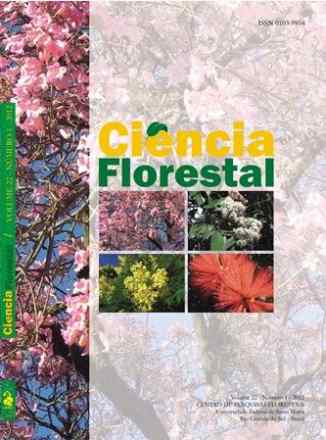PRODUÇÃO DO Pinus taeda L. EM POVOAMENTO DESBASTADO NA REGIÃO DOS CAMPOS DE CIMA DA SERRA, RIO GRANDE DO SUL
Ciência Florestal
PRODUÇÃO DO Pinus taeda L. EM POVOAMENTO DESBASTADO NA REGIÃO DOS CAMPOS DE CIMA DA SERRA, RIO GRANDE DO SUL
Autor Correspondente: Paulo Renato Schneider | [email protected]
Palavras-chave: produção, desbaste seletivo, área basal
Resumos Cadastrados
Resumo Português:
Este trabalho foi realizado com o objetivo de estudar a produção do Pinus taeda L., implantado num
espaçamento inicial de 3 x 2 m, localizado em Canela, estado do Rio Grande do Sul. A população amostral
foi submetida a um e dois desbastes seletivos, além da manutenção de uma testemunha, sem desbaste. Os
desbastes foram realizados por baixo com redução da área basal para nÃveis de 28 m2ha-1. Aos 17 anos, a
produção total das parcelas testemunhas, sem desbaste, foi de 886,3 m3ha-1; com a realização de um desbaste
aos 11 anos, de 756,6 m3ha-1, tendo resultado perdas de produção em relação a testemunha de 14,6 %; com
dois desbastes aos 11 e 15 anos, a produção foi de 732,9 m3ha-1, tendo provocado perdas de produção em
relação à testemunha, sem desbaste, de 17,3 %. Os desbastes executados permitiram um ganho significativo
em diâmetro, até os 17 anos de idade, com a execução de um desbaste aos 11 anos obteve-se um diâmetro
médio de 33,4 cm; com dois desbastes aos 11 e 15 anos, um diâmetro médio de 33,5 cm; e, um diâmetro
médio de 24,3 cm na testemunha, sem desbaste.
Resumo Inglês:
This work was carried out with the objective of studying the yield of Pinus taeda L., planted in an initial
spacing of 3 x 2 m, located in Canela, Rio Grande do Sul state. The amostral population was submitted
to one and two selective thinning, beyond a control sample, without thinning. The selective low thinning
was conducted with reduction of the basal area to levels of 28 m2/ha. At age 17, the total yield of the
control sample, without thinning, was 886.3 m3ha-1; with one thinning at age 11 the yield was 756.6 m3ha-
1, resulting in losses of yield of 14.6% compared to the control; with two selective at ages 11 and 15, the
yield was 732.9 m3ha-1, resulting in losses of yield in relation with the control sample, without thinning, of
17.3%. The selective thinning allowed a significant gain in diameter, up to age 17; with the execution of a
selective thinning at age 11 an average diameter of 33.4 cm; was obtained with two selective thinning at
ages 11 and 15 an average diameter of 33.5 cm; and an average diameter of 24.3 cm in the control sample,
without thinning.

